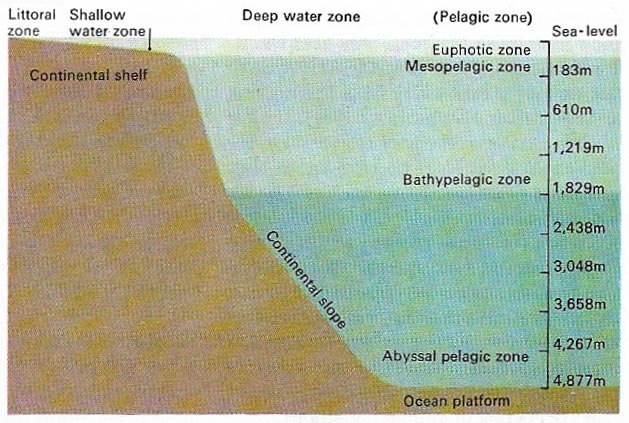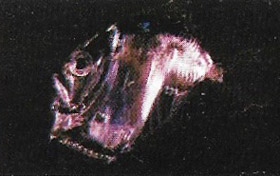bathyal zone

Figure 1. The ocean layers from the translucent surface waters through the twilight zone to the depths of eternal gloom provide a range of habitats to which the ocean's wealth of species are adapted. The "conventional" fish shape of the tuna and the shark, which live in the euphotic and mesopelagic zones, is a marked contrast to the highly developed forms of the abyssal zone.
The bathyal zone, or bathypelagic zone, is a region of the ocean that extends from the edge of the continental shelf, about 133 meters (436 feet) in depth to about 2,000 meters (6,560 feet), where the abyssal plain (see abyssal zone) begins, to the upper layers of this zone.
Animals of the bathyal zone are largely dependent for food on the rain of debris from the mesopelagic and euphotic zones above them.
 |
| The hatchet fish (Sternoptyx diaphanaem) is typical of the luminous fish of the bathyal zone. It possesses "cold Light" luminous organs in its body that supply the only light to waters of this depth. Its large mouth is typical of predatory deep-sea fish. In the sunless depths there are very few prey species and a large mouth is therefore essential if a fish is to obtain enough food to survive. |


